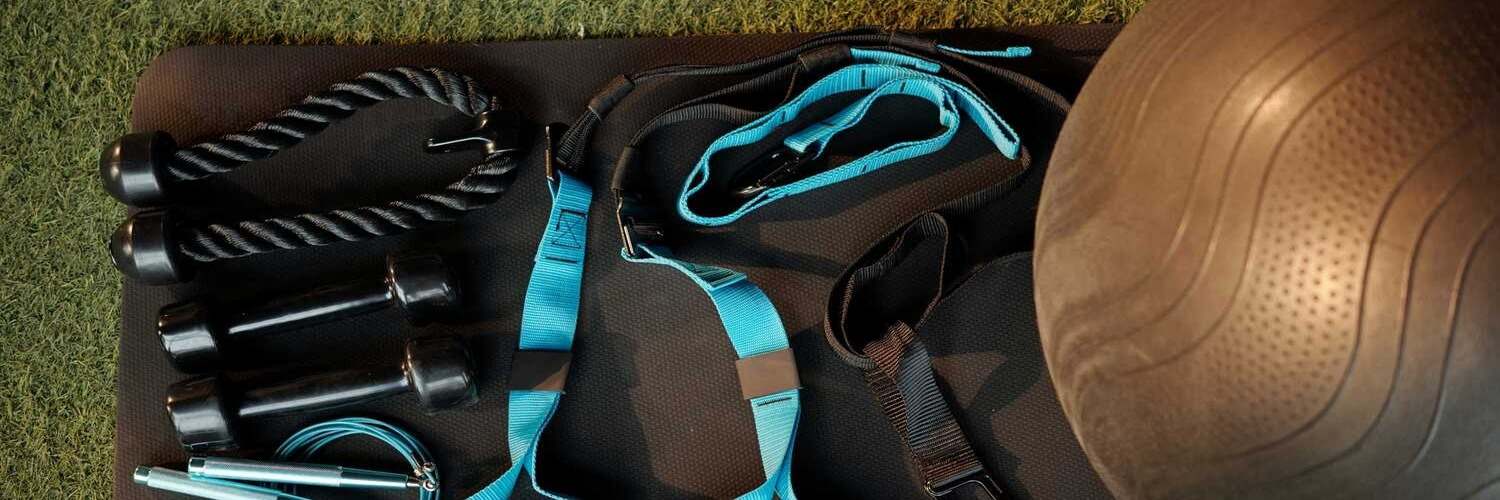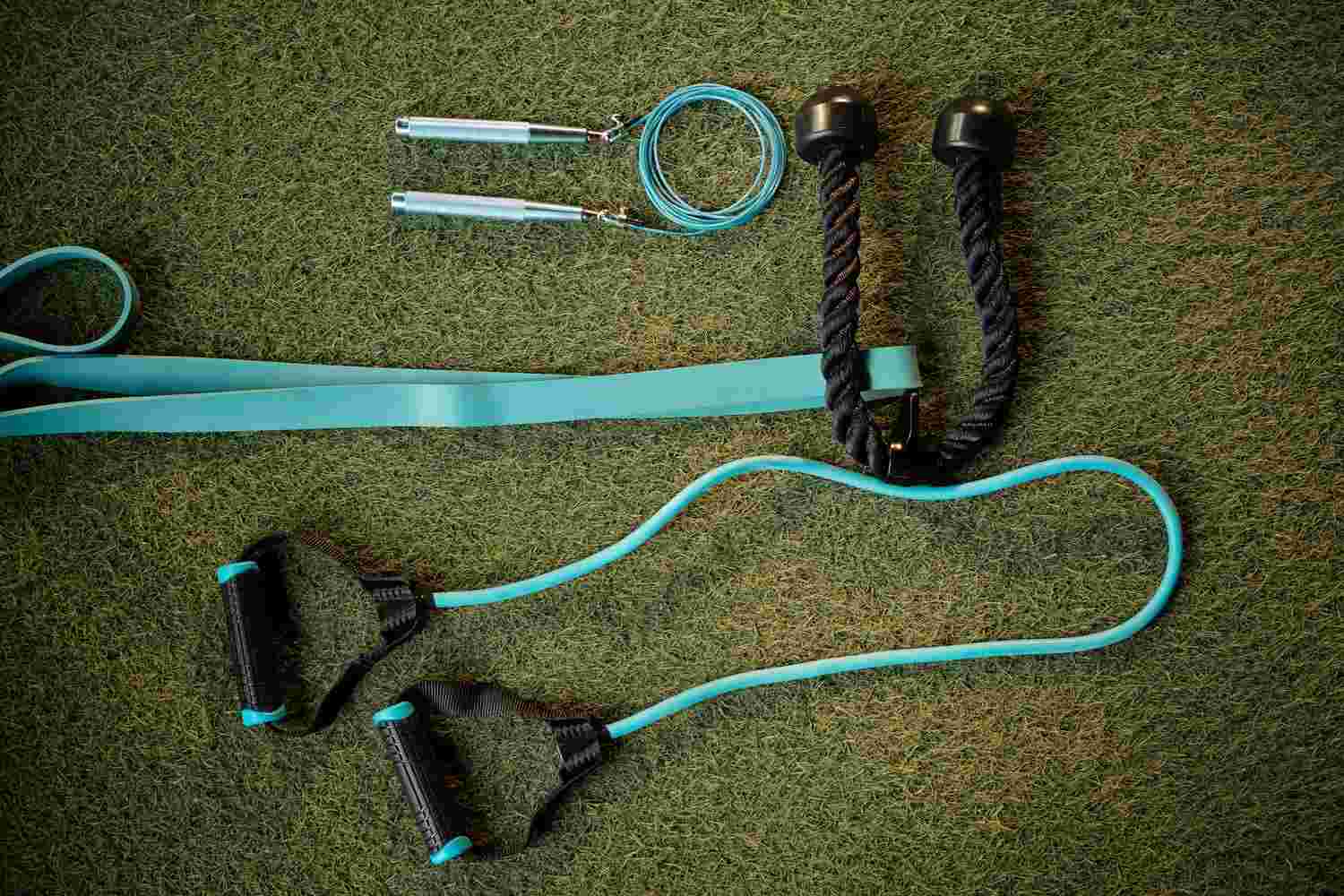- Jake Peter
- Published: May 19, 2024
- Fact-checked by Dr. Desiree Granados

In today’s fast-paced world, finding time to hit the gym can be challenging. Moreover, purchasing high-end fitness equipment can be quite costly. That’s where the ingenuity of DIY fitness solutions comes into play. By using everyday items and a bit of creativity, you can design effective workout tools right at home.
Whether you’re looking to save money or space or simply enjoy the satisfaction of building something yourself, the following tips and ideas will help you design a home gym.
What Are the Benefits of Using DIY Gym Equipment?
Using DIY gym equipment can offer several advantages, particularly for those looking to stay fit on a budget. These benefits can include:
- Affordability: Creating your own gym equipment can be much cheaper than buying commercial products. The materials needed for DIY projects are often inexpensive and can be sourced locally.
- Customizability: DIY gym equipment can be tailored to fit your specific workout needs and space constraints.
- Sustainability: Many DIY projects utilize recycled or repurposed materials, contributing to a more eco-friendly lifestyle by reducing waste.
- Sense of Accomplishment: Building your own gym equipment can be a rewarding experience, giving you a sense of achievement and ownership over your fitness journey.
- Adaptability: If you want to upgrade or modify your equipment, DIY solutions allow for easier adjustments and improvements.
How Can I Make Home Gym Equipment?
Creating your own home gym equipment is both cost-effective and creatively satisfying. To start, resistance bands can be fashioned from heavy-duty rubber tubing or old bicycle inner tubes. To build a medicine ball, fill an old basketball with sand and seal it tightly. For a pull-up bar, insert a strong pipe or beam securely between two walls or a door frame.
By using everyday items and a bit of ingenuity, you can assemble a functional home gym without breaking the bank.
How Do You Make Your Own Dumbbells?
To make your own dumbbells, you can use a variety of materials readily available at home. The easiest method is filling empty plastic bottles with sand, gravel, or water and then securely tightening the caps.
If you prefer a more durable option, you can create cement dumbbells. Start by mixing cement with water in a bucket, then pour it into two separate molds, such as old cans or smaller buckets. Before the cement sets, place a strong metal rod or dowel through the center of both molds to act as the dumbbell handle. Once the cement has hardened, remove the molds, and you will have a sturdy pair of homemade dumbbells.

How Do You Make a Bench Press at Home?
To create a bench press at home, find a sturdy, flat, comfortable bench that can support your weight. You can use a wooden plank or an old table, reinforcing it with additional supports or padding as necessary. Next, you’ll need a barbell and weight plates. If these are not available, find two objects of equal weight, such as heavy books or water containers, and attach them securely to a metal rod or wooden dowel.
How Do You Make a Homemade Squat Rack?
To make a squat rack at home, first gather your materials and tools. You’ll need sturdy wood or steel pipes, screws, nuts, bolts, a saw, measuring tape, and a drill. Begin by measuring and cutting the wood or pipes to create the base of the squat rack. The base should be wide enough to provide stability and long enough to allow for a comfortable stance.
Next, cut and assemble the vertical uprights. These should reach a height that accommodates your full range of motion during squats. Secure the uprights to the base using screws or bolts for a strong foundation. Then, add horizontal supports at multiple levels along the uprights to hold the barbell. Ensure these supports can handle the weight of the barbell and any additional weights you plan to use.
Finally, test the stability of your homemade squat rack. Gently shake the structure to check for any wobbling or weaknesses and make any necessary adjustments to reinforce the rack.
How Can I Use Household Items as Exercise Equipment?
You don’t need expensive gym equipment to get a good workout. Many everyday household items can double as exercise equipment. Here are some household items you can use to stay fit:
- Water Bottles: Use water bottles as hand weights for exercises such as bicep curls, tricep extensions, or lateral raises.
- Backpack: Fill a backpack with books and wear it for added resistance during squats or lunges, or while walking up and down stairs.
- Chairs: A sturdy chair can be used for step-ups, tricep dips, or as an anchor for ab exercises like seated leg lifts.
- Towels: Use a towel for resistance training by pulling on both ends, or place it under your feet for sliding lunges and hamstring curls on smooth surfaces.
- Cans of Food: Canned goods are great for adding weight to arm exercises if you don’t have dumbbells.
- Walls: Wall sits are an excellent way to work your thighs and glutes, and you only need a wall for support.
- Stairs: Running or walking up and down the stairs is an excellent cardiovascular workout that can also strengthen your legs and glutes.
How Can I Make a Home Gym for Beginners?
Creating a home gym can be an exciting and rewarding project. Here are some tips to help you get started:
- Choose the Right Space: Identify a suitable area in your home, such as a spare room, garage, or basement. Ensure it has enough ventilation, lighting, and space for movement.
- Invest in Essential Equipment: Start with basic items that offer a range of exercise options, like dumbbells, resistance bands, a yoga mat, a stability ball, and/or a jump rope.
- Design a Functional Layout: Arrange your equipment to maintain a clutter-free environment. Create designated zones for different types of workouts, such as strength training, cardio, and stretching.
- Add Personal Touches: Include motivational posters, a sound system for music, and/or a TV for workout videos to make the space enjoyable and inspiring.
- Plan for Safety: Ensure there is adequate flooring to prevent slips or injuries. Foam or rubber mats can provide cushioning and protect the floor.
- Stay Organized: Use storage solutions like shelves or hooks to keep equipment tidy and easily accessible.
Conclusion
In conclusion, building a home gym can be an achievable and fulfilling endeavor that can vastly improve your fitness routine. Whether you choose to build your own equipment or use household items, you can develop a workout space tailored to meet your needs. Investing time and effort into your home gym can not only save you money but also provide a convenient space to help you stay active and healthy.
If you want to improve your physical fitness, the Sanctuary Wellness Institute can help. Our online personal trainers provide personalized exercise regimens, real-time coaching, and all the motivation you need to stay focused on your goals. In addition, for those seeking to lose weight while getting fit, the Sanctuary offers an online medical weight loss program.
Book a free consultation today to learn more.
How we reviewed this article:
- SOLE Fitness (2023). The Unparalleled Benefits of Home Exercise Equipment: A Comprehensive Analysis
https://www.soletreadmills.com/blogs/news/the-unparalleled-benefits-of-home-exercise-equipment-a-comprehensive-analysis - Coop Mitchell (2022). DIY Concrete Dumbbells Guide
https://www.garagegymreviews.com/diy-concrete-dumbbells - Vidur Saini (2023). DIY Bench Press — Build Your Own Sturdy Bench At Home
https://fitnessvolt.com/diy-bench-press/ - Michael Shafer (2023). How to Build a DIY Squat Rack
https://barbend.com/how-to-build-a-diy-squat-rack/ - Hedy Phillips (2023). 12 Everyday Household Items That Double as Gym Equipment
https://www.cnet.com/health/fitness/12-everyday-household-items-for-your-workouts/
Current Version
May 19, 2024
Written By
Jake Peter
Fact-checked By
Dr. Desiree Granados
Editorial Process
Our Editorial Process
Other Posts About Personal Trainer
No posts found!

Jake Peter received his journalism degree from Emerson College and has been writing content for the Sanctuary Wellness Institute since 2021. He is passionate about all things cannabis.

